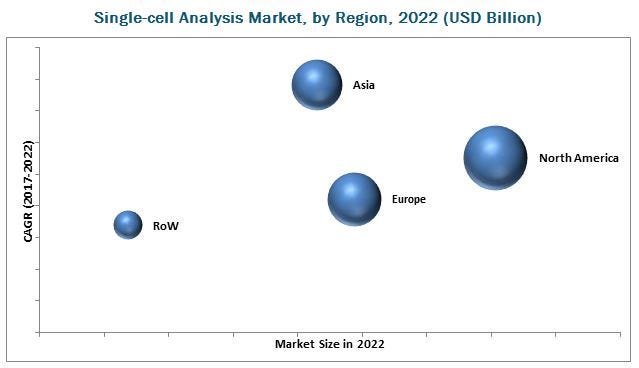The high
prevalence of infectious diseases and various types of cancers, increasing
awareness and acceptance of personalized medicine and companion diagnostics,
growth in the biomarker identification market, and advancements in molecular techniques
are some of the key factors driving the growth of this market.
What the Market
Looks Like?
Predicted to grow at a CAGR of 8.4% during the forecast period,
the Global Molecular
Diagnostics Market is estimated to reach USD 11.54 Billion by the end of 2023.
In 2018, North America to dominate the market.
On the basis of technology, the market is broadly segmented into
PCR, INAAT, DNA sequencing & NGS, in situ hybridization, DNA microarrays,
and other technologies. The PCR segment is expected to account for the largest
share of the global molecular diagnostics market in 2019. The large share of
this segment is attributed to the growing use of PCR in proteomics and
genomics, automation of PCR instruments, and the emergence of advanced
technologies like qRT-PCR.
On the basis application, the market is broadly segmented into infectious
diseases, oncology, genetic tests, and other applications. The infectious
diseases segment is expected to account for the largest share of the global
molecular diagnostics market in 2019. The large share of this segment is
attributed to the development of advanced assays for different diseases and
conditions, significant increase in the prevalence of infectious diseases, and
rising awareness about the effective use of molecular diagnostic technologies
to control the occurrence and spread of infectious diseases.
On the basis of end user, the Molecular Diagnostics Market is
broadly segmented into hospitals and academic laboratories, reference
laboratories, and other end users. The hospitals and academic laboratories
segment is expected to account for the largest share of the market in 2019. The
large share of this segment can primarily be attributed to the large number of
diagnostic tests conducted in hospitals.
Download PDF
Brochure @ https://www.marketsandmarkets.com/pdfdownloadNew.asp?id=833
What Drives the
Market?
The growth of the global market for Molecular Diagnostics is
primarily influenced by the following factors:
·
High Prevalence of Infectious Diseases and Various Types of
Cancers
·
Increasing Awareness and Acceptance of Personalized Medicine
and Companion Diagnostics
·
Growth in the Biomarker Identification Market and
Advancements in Molecular Techniques
Geographical growth scenario of Molecular Diagnostics Market:
North America is expected to account for the largest share of the
global market. The large share of this region is mainly attributed to the high
prevalence of infectious diseases and cancers, presence of a highly developed
healthcare system and large number of leading national clinical laboratories,
easy accessibility to technologically advanced instruments in the region,
availability of government funds, and growing applications of molecular
diagnostics in genetic disorders and cancer screening.
Leading market
players and strategies adopted:
The key players
in the Global Molecular Diagnostics Market are Roche (Switzerland), Hologic (US),
QIAGEN (Netherlands), Abbott (US), and Danaher (US).
These players
focus on inorganic strategies such as acquisitions, partnerships, agreements,
and collaborations as well as organic strategies such as expansions and product
launches & approvals to sustain their positions in the market.
